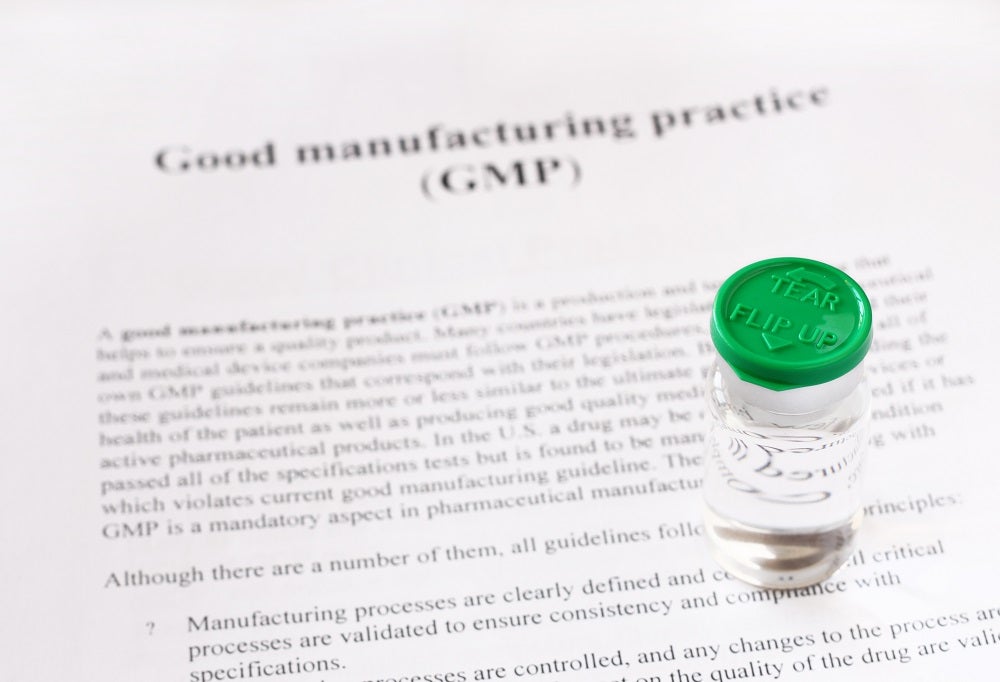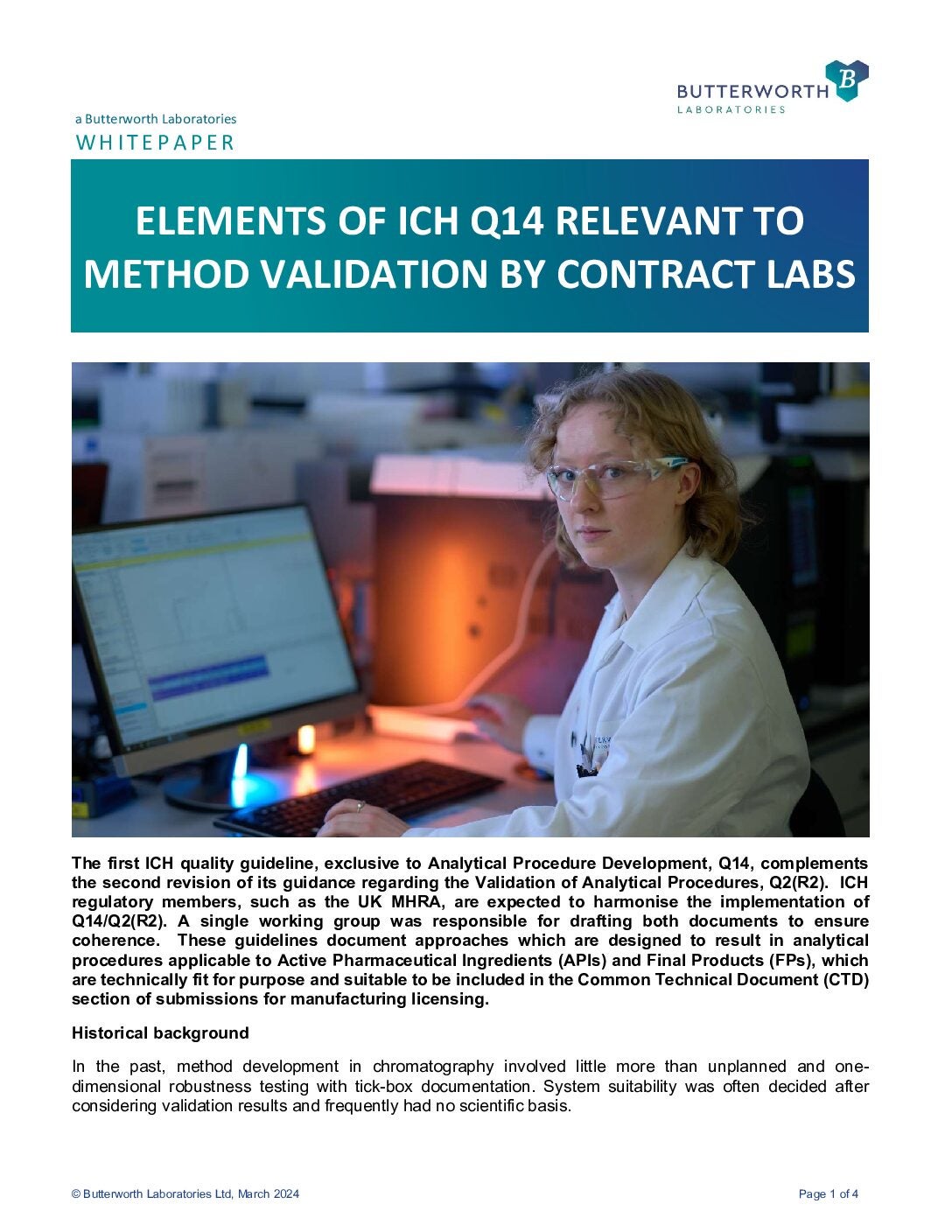
The latest ICH guideline, Q14, complements Q2(R2) for the validation of analytical procedures. Revision of Q2(R1) into Q2(R2) aligns its implementation with Q14(1), ensuring coherence between both guidelines. “Understanding Q14 requires consideration of both Q2(R1) and Q2(R2), as these guidelines are in harmony with ICH guidelines Q8 to Q12(1),” says Frank Judge BSc (Hons) CChem MRSC MChromSoc CSci, Consultant Chemist, Chromatography at Butterworth Laboratories Ltd.
Judge says it is vital to consider the historical significance of Q2(R2) and why Q14 has been introduced. In this article, Judge takes us back in time to remind the pharmaceutical industry of its roots in quality control and the advantages of Q14.
Historical Significance
“Reducing the risk associated with drug products for humans has always been a fundamental concern in modern pharmaceutical regulatory systems,” says Judge. “The guidelines developed by ICH focus on three key areas: efficacy, safety, and quality of medicinal substances, which are essential for obtaining manufacturing authorisation. The primary risk relates to the substance’s quality, purity, and impurities. Knowing the numerical value of these factors allows for adequate risk assessment and suitable control. However, these factors can be affected by variability in raw materials, manufacturing processes, packaging materials and other factors.”
ICH Q8(R2) on pharmaceutical development states that “quality cannot be tested into products”. In other words, quality should be built in by design. Q8(R2) defines QbD as “a systematic approach to development that begins with predefined objectives and emphasises product and process understanding and process control, based on sound science and quality risk management.”
ICH guidelines Q8 to Q11 describe QbD tools and their application to pharmaceutical development and manufacture. Submissions for manufacturing authorisation must include details of analytical methodologies and their validation; deficiencies in these can delay the approval process and delivery of medicinal substances to patients.
A key purpose of Q2(R2) and Q14 is to avoid delays in manufacturing authorisation. These guidelines provide a framework for applying QbD principles to improve the quality of analytical procedures, by focusing on the development process. This completes the application of QbD to ICH quality guidance, reducing the primary risk. The application of QbD to products involves designing and implementing a product development framework to achieve the highest possible quality and maintain control over this quality in the product. This approach significantly impacts pharmaceutical product lifecycle management (ICH Q12). Since QbD necessitates a deeper understanding of inputs and a broader range of validation specifications, any unplanned changes after manufacturing authorisation will require considerably less validation, thereby reducing the time needed for subsequent regulatory re-approval. This framework enhances both process and regulatory flexibility.
ICH Q12 states: “The extent of this operational and regulatory flexibility and its adequate implementation is subject to the regulatory framework in place, as well as product and process understanding (ICH Q8(R2) and Q11), application of quality risk management principles (ICH Q9), and an effective pharmaceutical quality system (ICH Q10)”.
Risk assessment involves considering possible negative outcomes and their probability. Ultimately, the patient bears the consequence of uncontrolled risk, to whom all involved in the pharmaceutical industry have a duty of care.

Q2(R1)/(R2)
The final working group concept paper for Q14/Q2(R2) states that the problem with Q2(R1) is that it “does not cover the more recent application of analytical procedures, for example, Near Infrared (NIR) Spectroscopy or Raman Spectroscopy.” The lack of guidance for these analytical data sets can lead to inadequate validation data submissions, causing application approval delays. The limitation in the range of analytical techniques covered by Q2(R1) is acknowledged by ICH. The scope of Q2(R1) excludes the application of the development framework provided by Q14.
Q2(R1) “is not sufficient to establish the suitability of multivariate methods. For example, traditional methods use reference standards, analysed along with the unknown samples, ensuring performance during each test. In contrast, multivariate model-based methods often do not use reference standards during analysis. This makes robust development, validation, and proper maintenance of such methods crucial for reliable prediction throughout the method lifecycle”.(1)
Q2(R2)’s expanded scope includes validation principles guiding the production of spectroscopic and spectrometry data required for regulatory submission.
Q14
Q14 is a new guideline detailing the elements of minimal and enhanced approaches for analytical procedure development.(2) While the traditional minimal development approach remains valid, the advanced approach employing QbD principles requires additional development data and knowledge, which is advantageous,(3) according to Judge, who adds: “Q14 was developed to address a significant gap.
“Since there is no ICH guideline on Analytical Procedure Development, applicants often report analytical validation results alone and rarely present performance evaluation with analytical development outcomes. This makes regulatory communication unproductive when non-conventional – for example, multivariate models for process control) analytical procedures are employed. Additionally, the lack of guidelines impedes opportunities for the applicant to present a scientific basis for flexible regulatory approaches – for example, the Quality by Design concept – to post-approval Analytical Procedure changes.(2)
Like the principles described for the manufacturing process, Q14’s Established Criteria (ECs) for analytical procedures should include elements that ensure the procedure’s performance. The extent of ECs and their reporting categories could vary based on the understanding of the relationship between method parameters and method performance, the method’s complexity, and the control strategy.
Bibliography
- Final Concept Paper ICH Q14: Analytical Procedure Development and Revision of Q2(R1): Analytical Validation; ICH, 14 November 2018.
- Final Business Plan ICH Q14: Analytical Procedure Development and Revision of Q2(R1): Analytical Validation; ICH, 14 November 2018.
- ICH Q14: Analytical Procedure Development; adopted 14 December 2023.


